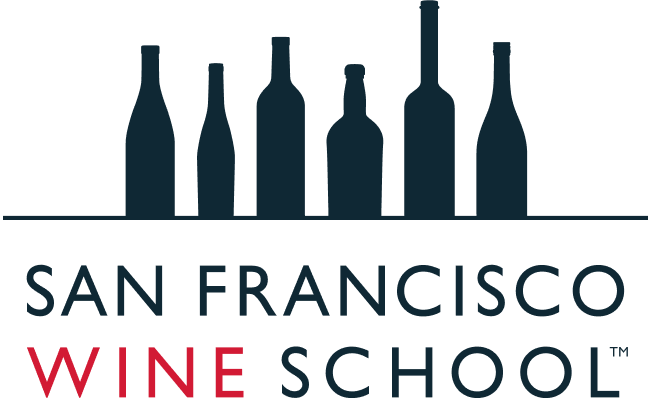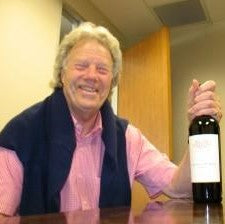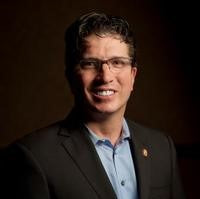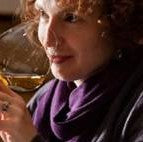Mel Master
Mel Master’s illustrious wine career began when he and his wife Janey ensconced themselves in Spain’s Sanlucar de Barrameda. She befriended a mule, Tommy, while Mel became entranced with the local tipple of Sherry. “It was magical,” said the male Master…though I suspect at the time Janey may have been as taken with Tommy as Mel was with Sherry. Spanish wines weren’t in the stars for the Masters as they found their fortunes exploring and promoting the as-yet undiscovered wines of France. They helped create the wave of interest in the US market into finer yet more accessible French wines during the 1970s, and in so doing were amongst the pioneers paving the way for what we know today is a far more diverse and savory market of France’s wines than existed before theirs and others’ efforts.
Where did you go from Jerez?
My family had always been in the British wine business, that’s why I went into it. After a year in Europe (Porto, Burgundy, Bordeaux followed) we returned to start our own business, eventually leaving England in 1970 for Aix en Provence where we raised our family and continued our passion for food & wine. I had a great interest in the Rhône at that point, it was fairly unexploited, and we both felt there was a lot of potential for lesser known wines in the US; we were disenchanted with England and saw the US as more exciting. Janey had this passion for cooking, developed a friendship with Paul Bocuse, enjoyed many Beaujolais under his label, and thought to also sell his wines in the US. He suggested we meet his friend Georges Duboeuf with whom we soon developed a very successful business in 1971 with Duboeuf making Bocuse’s wines. I hired John Livingstone Learmouth, with whom I wrote the first ever English language book on the Rhône’s wines, and moved to Denver in 1975. It was then that I met Chicago’s Yale Sager who became my representative in the northeast, eventually becoming our partner in Master Wine. Janey was giving cooking lessons there when she got a call from Sally Jordan who asked us to cook a dinner with Bocuse at her home. In time the Jordans asked us to help open their California winery doing all the marketing, hospitality, and launching Jordan Winery in 1980.
How did you dovetail your winery work with Janey’s entree into food?
During the Jordan period we brought Paul Prudhomme, Alice Waters, and other chefs to Tavern on the Green, the first time that young American chefs had been spotlighted. When I left Jordan in 1982 I sold my interest to my partner Yale and took half a year off to write music. My relationship with the young chefs including Jonathan Waxman of Los Angeles led to my opening Jams with him in NYC in 1983. Jams was the first open kitchen in NYC playing into the chef scene’, doing that for four years. In 1989 we returned to France selling little wines of the Languedoc with little success. We then looked for varietal wines from the Languedoc which would sell in the US, developing the Les Jamelles brand, selling it when the time was right. We then returned to Denver to open yet another restaurant, Barolo Grill, then Mel’s Bar & Grill and Starfish. We then decided to straddle France and America by going back to the Languedoc developing our current Tortoise Creek brand aimed less to cooperatives than single domaines/growers which emphasize sustainability.
How have US tastes changed over the past 50 years?
More wine conscious Americans have traveled and have been exposed to the ‘old’ wine flavors. Even though the Old World has tried to make their wines like those in the New, the US palate hasn’t changed that dramatically, Americans still like fruit forward wines. But it’s certainly becoming more adventurous (e.g. Picpoul de Pinet).O only in the last 5-10 years have people come to move away some from overly done Chardonnays. The influence of Parker has made an enormous difference in the ways wines are made in the Old World though there are many sommeliers and consumers who’ve moved away from his writings and developing opinions of their own. The younger sommeliers now read and travel more than before.
How has US restaurant service standards and customers’ expectations changed? How should they continue to develop?
The biggest problem is still the markup in restaurants. It’s cheaper to get a buzz on with one martini than it will likely be with two glasses of wine; but service standards have improved. I wrote a letter to Decanter last year saying that there isn’t a distinction delineating the significance of those who achieved their accreditation 20 years ago as opposed to today. It’s like becoming a medical doctor now to become a Master of Wine.
Adding to Mel’s comments, Janey said that, “consumers are no longer threatened by lists and sommeliers. More people are drinking what they want, are very informed. Before 1980 you could easily tell between the good guys and the bad guys. Quality is now more easily found.”
The Masters are joined in Tortoise Creek by their son, Charlie, while the brand is a joint venture between the Masters and their once partner Sager, closing the circle…until a new venture beckons to them!
Check out our full schedule of programs, workshops and public events. Private, customized experiences and corporate training is also available.
Learn more about restaurant wine in our Restaurant Wine 101 Program.



